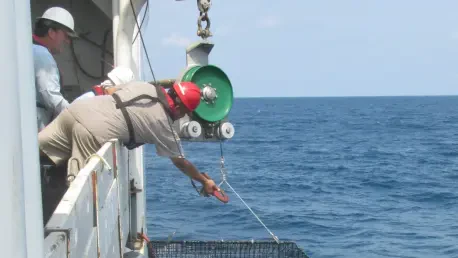Have You Considered the Hidden Threat Beneath Your Vessel?
Every time you set sail, there may be more lurking beneath the surface than you realize. Exotic marine species, hitching a ride on boat hulls, threaten local ecosystems. These invasive creatures have the potential to disrupt marine life, economies, and the shorelines we cherish. How can boat owners act to prevent this silent invasion?
The Significance of Marine Biosecurity
Marine invasive species are more than just uninvited guests; they can wreak havoc on local marine habitats. These organisms often displace native species, damage fisheries, and impact sectors dependent on healthy marine environments. Marine biosecurity, thus, emerges as both an ecological and economic imperative. By safeguarding our waters, the very foundation of many coastal communities remains protected, ensuring sustainable fishing practices and preserving biodiversity.
Proactive Measures for Boat Owners
Vigilance in Marine Surveillance
Regular inspections of vessels and equipment are paramount in maintaining marine biosecurity. Identifying signs of biofouling and marine pests early can prevent them from establishing a foothold. Such diligence minimizes the risks associated with invasive species and ensures the preservation of local marine ecosystems.
Advanced Antifouling Technologies
Technological innovations offer modern solutions. Systems like Hull Shield ultrasonic systems are state-of-the-art technologies designed to prevent species from adhering to boats. This ultrasonic technology is gaining traction as a viable preventive measure against biofouling, providing boat owners with effective tools to combat the invasive threat.
Community Engagement and Responsibility
Marine biosecurity isn’t solely a personal responsibility but a communal effort. A national survey highlights that boaters understand their role in protecting the seas. Sharing best practices, engaging in awareness programs, and promptly reporting sightings of suspicious species are collective actions that bolster community efforts in maintaining healthy marine environments.
Expert Insights and Real-World Scenarios
Opinions from Marine Research Facilities
Institutions like the Cawthron Institute play a crucial role in marine biosecurity. Their research delves into effective management strategies, offering boat owners expert advice grounded in empirical data. Funding escalated for marine biosecurity programs, ensuring continuous advancements in eradicating and managing invasive species.
Case Studies: Real Impact of Invasive Species
Practical examples underscore the severity of biosecurity threats. In Paradise Bay, a cruiser encountered suspected exotic caulerpa, prompting swift intervention and community vigilance. Such incidents, alongside the proactive responses to Mediterranean fanworm detections nationwide, demonstrate the importance of preparedness and rapid action in dealing with invasive threats.
Actionable Steps for Boat Owners
Creating a Preparedness Checklist
A pre-departure biosecurity checklist is indispensable for boat owners. This checklist ensures that all precautions are observed, reducing the risk of transporting invasive species. Having a structured approach helps to mitigate these risks efficiently.
Regular Hull Maintenance
Routine hull cleaning, both in-water and dry-docking, is critical. Regular maintenance keeps biofouling at bay and aligns with regulations like the CRMS Vessels guidelines. Compliance with these standards ensures adherence to best practices in marine biosecurity.
Participating in Awareness Programs
Engagement in marine pest awareness initiatives, like those at the Auckland Boat Show, fosters knowledge and proactive behavior within the boating community. Staying informed about biosecurity measures allows boat owners to become active participants in safeguarding the seas.
Reporting and Collaborating with Authorities
Encouraging prompt reporting of suspicious species sightings is vital. Collaborating with local authorities facilitates timely interventions, preserving the health and integrity of coastal ecosystems. Boat owners become pivotal in monitoring and protecting marine environments through their vigilance and cooperation.
Conclusion: Moving Forward with Vigilance and Responsibility
The journey toward effective marine biosecurity involves a blend of individual actions, community engagement, and technological advancements. By maintaining diligence in vessel inspections, adopting innovative antifouling technologies, and participating in awareness programs, boat owners help preserve marine ecosystems. Collaborative efforts with research institutions and compliance with regulations ensure robust preventative measures. The path ahead calls for collective responsibility and unwavering vigilance, securing a sustainable and thriving marine environment for future generations.









